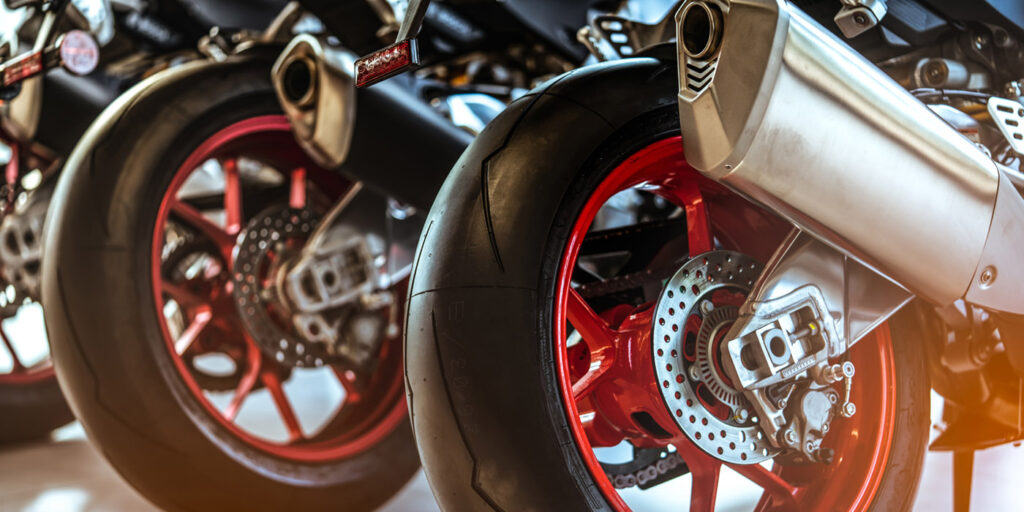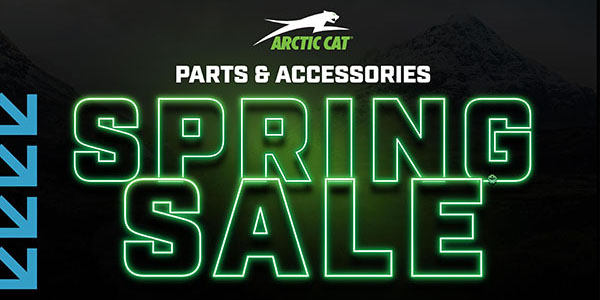Have you ever had pipe envy? That moment when you saw a new set of pipes on your friend’s bike and realized, “Man, I want those!” Then you start a conversation about why said friend purchased that exhaust and how it enhances the bike.
Riders are tribal like that, and peer influence is a major factor in their buying decisions. But even without that envy, deep down, there are a few reasons why customers are looking to change out their exhaust systems. When you know what those are, you can help them choose a new, better set and showcase those pipes properly.
What Are Riders Looking for?
“Generally speaking, cruisers tend to look to change out their exhaust more than other segments of motorcycles. But we’re seeing a lot of success on the adventure touring market,” explains Mike Kennedy, president and CEO of Vance & Hines.
Cruisers — and even adventure tourers — eat up hundreds of miles of asphalt and dirt, respectively, so their bikes need to perform well over long stretches of time and in varying weather conditions and/or terrains. Furthermore, a bike is a source of pride for a rider, and many are looking to turn some heads when on the highway. If you had to boil it down, there are four main reasons customers are looking for a new set of pipes: performance, sound, weight, and style.
Let’s consider the cruiser and custom-bike builder segments. For them, it’s all about sounding good and riding well — but mainly about sounding good. These riders are looking to change out those “quiet” factory exhausts with those that pack more punch on the eardrums. Of course, sound is a very personal matter to a rider, and we’ll discuss later on how to make sure customers get the tone that’s just right for them.
Let’s take the cruiser vs. adventure tourer segments, for example. The difference between their interests might just come down to weight. For instance, Kennedy notes, an adventure-exhaust might take 6 pounds off a bike, which is a big deal when riding off-road; however, taking 6 pounds off a 650-pound Harley-Davidson bagger is not going to matter much in the long run.
For that reason, racers — both off- and on-road — will also be looking to minimize weight while maximizing power. But if there’s one thing that could get in the way of power, it’s a stock exhaust clogged with a catalytic converter.
Original equipment manufacturers (OEMs) are bound by federal regulations for emissions and noise control, so they put in catalytic converters and sound dampeners to reduce both. As far as looks go, OEMs also aren’t going to add a ton of flair to the design of their exhaust systems.
Related: Emissions, Heat and Noise Reduction in Exhaust Systems
“Factory exhaust systems are often inelegant and over-baffled, so most customers are after something that looks and sounds appropriate for the bike,” David Zemla, vice president of marketing for S&S Cycle, explains. “Stock exhaust are restricted by catalysts that live close to the exhaust port. This is great for making the heat needed for the chemical reaction of the catalyst but not so much for exhaust gas flow.”
As a result, aftermarket companies often move the catalyst to the lower part of the exhaust and use more free-breathing honeycomb to allow for increased exhaust velocity and higher performance.
But not all customers in the market for exhaust systems are motorcycle riders. What about powersports users? Do they have different needs from bikers? Yes and no. Weight and style might not be so much of an issue, but performance and sound still will be.
“Packaging is key to the difference between two- and four-wheeled machines,” Zemla states. “A motorcycle will have to guide hot gasses from in front of the rider to behind the rider and do so without forcing excess heat onto the rider or passenger. A UTV is [a] rear engine, and the path to exit is much simpler. An off-road vehicle’s exhaust is tucked away, and they are rarely forced to deal with the aesthetics of an exhaust in the same fashion a cruiser is.”
Tim Welch, sales manager for Yoshimura R&D of America, adds that with UTVs, everything about the exhaust comes down to durability. “It’s a lot of power, and it’s a lot of abuse and vibration and all these kinds of things, so durability becomes a much more important attribute.”
Common Misconceptions About Exhaust Systems
Louder means more power. Do you believe this? If so, you’re not alone — and you believe one of the biggest misconceptions about exhaust systems.
“The latest engine platform from [Harley-Davidson] debunks that thinking on the regular, and a shorty noise maker on a modern Harley will absolutely kill power, particularly in the first half of the throttle,” Zemla notes.
In fact, dealers and consumers alike have a lot of misconceptions about what adds power to a bike. For instance, owners are quick to remove catalysts and inserts, even though nowadays, they actually enhance performance.
Welch notes that his company, for instance, puts inserts in every single racing exhaust system. “That insert, while it is there to manage and mitigate some of the noise to make the exhaust system sound compliant for whatever racing organization that would be relevant… when you remove that insert, in many cases — if not most cases — it loses power.” Welch has had many customers call and complain that their bikes’ performance gains didn’t match the published dyno chart and were down on horsepower. Most times, he only has to ask, “Did you remove the insert?” to discover the reason.
He adds that many consumers believe buying street-legal exhaust isn’t going to give the bike any extra power. In fact, a large subset of riders assume that aftermarket exhausts don’t outperform stock exhausts. However, Welch argues, as long as the company invests in research and development, it can improve upon stock offerings without fouling the law.
Related: Exhaust System Builds, Materials and Developments
Yet another misconception comes in the form of header length. According to Danny Valencia, operations manager for Two Brothers Racing (TBR), many people believe that unequal length headers reduce power. While that may be true on one level, it doesn’t take the full picture into account.
“People always say equal length headers always make the most power, and that’s the only way to go. But we like to always use unequal length headers,” Valencia explains. “It’s going to make the power hit more –– typically in the lower end; it’s going to add more torque usually, so you get more usable power versus focusing on just mass horsepower at a higher rpm.”
Finally, there’s also been a great deal of confusion over whether or not the use of an aftermarket part will void a manufacturer warranty. Many people believe it will. However, Kennedy states, “If the aftermarket part maintains compliance with emissions regulations, the dealer and the rider should have the confidence that vehicle warranty should remain intact.”
Stocking and Showcasing
Think about when you go clothes shopping. Are you more apt to notice clothes on the rack or on a manikin? Just like how a manikin draws your eyes towards specific clothes, customers will be drawn to aftermarket exhaust systems installed on your showroom floor bikes.
In fact, every expert I spoke to agrees that putting pipes on a bike versus a rack on the wall is the best way to showcase exhaust systems. Even installing them on employee bikes in the parking lot (if you don’t have room for all of them on the show floor) can help.
“When you have a pile of parts on a table or stuck on a wall, it doesn’t create the whole picture,” Welch says. “But when you put it on a motorcycle and maybe you light it and the customer sees it and it’s inspiring. They aspire to ride that motorcycle. When you put it on the wall, and it’s just a shiny chunk of metal… they have to connect the dots themselves.”
Another marketing method you can use is to have two of the same vehicle model on the floor: one with the stock exhaust and one with the aftermarket version. When customers see the aftermarket version, they’ll likely be drawn to it and want to buy the model with that exhaust. According to Welch, this becomes a great bargaining tool, because when customers try to negotiate for the aftermarket version, you can tell them that you can’t give them the vehicle with the aftermarket exhaust, but you can give them the one with the stock exhaust for a better deal. The customer will usually relent… and then end up buying the aftermarket exhaust as well.
However, just showing off the pipes on the bike isn’t enough. Remember, one of the reasons customers are looking for exhaust systems is because of the sound. They’re going to want to hear some examples. “Nothing is as powerful a sales tool as listening to a proper exhaust note,” Zemla asserts.
In fact, a lot of riders feel like they can’t buy exhaust unless they go to shows like Sturgis, where they can hear the exhaust in person. But Sturgis only happens once a year, and you’re in your dealership every day. Make sure you have a plan in place for letting customers hear those unique notes. Whether you let customers take test rides on the modified bikes or just turn them on and let them hear it, you’ll have a better chance of selling.
“Anytime they can actually hear it, touch it, see it, then they get hooked on it,” Valencia states.
With so many different brands and types of exhaust systems out there, how do you know which to stock and showcase? According to Welch, there’s a simple method: Look at your top-selling bikes and stock the exhaust that goes along with them.
Valencia recommends being aware of the social trends or what events are coming up. Getting ahead of the curve and getting those products in is tricky but can really pay off if you play your cards just right.
With so many exhaust system manufacturers in the industry, it’s important to find one with high-quality products that are the result of dedicated research and whose support you can count on for marketing and support.














